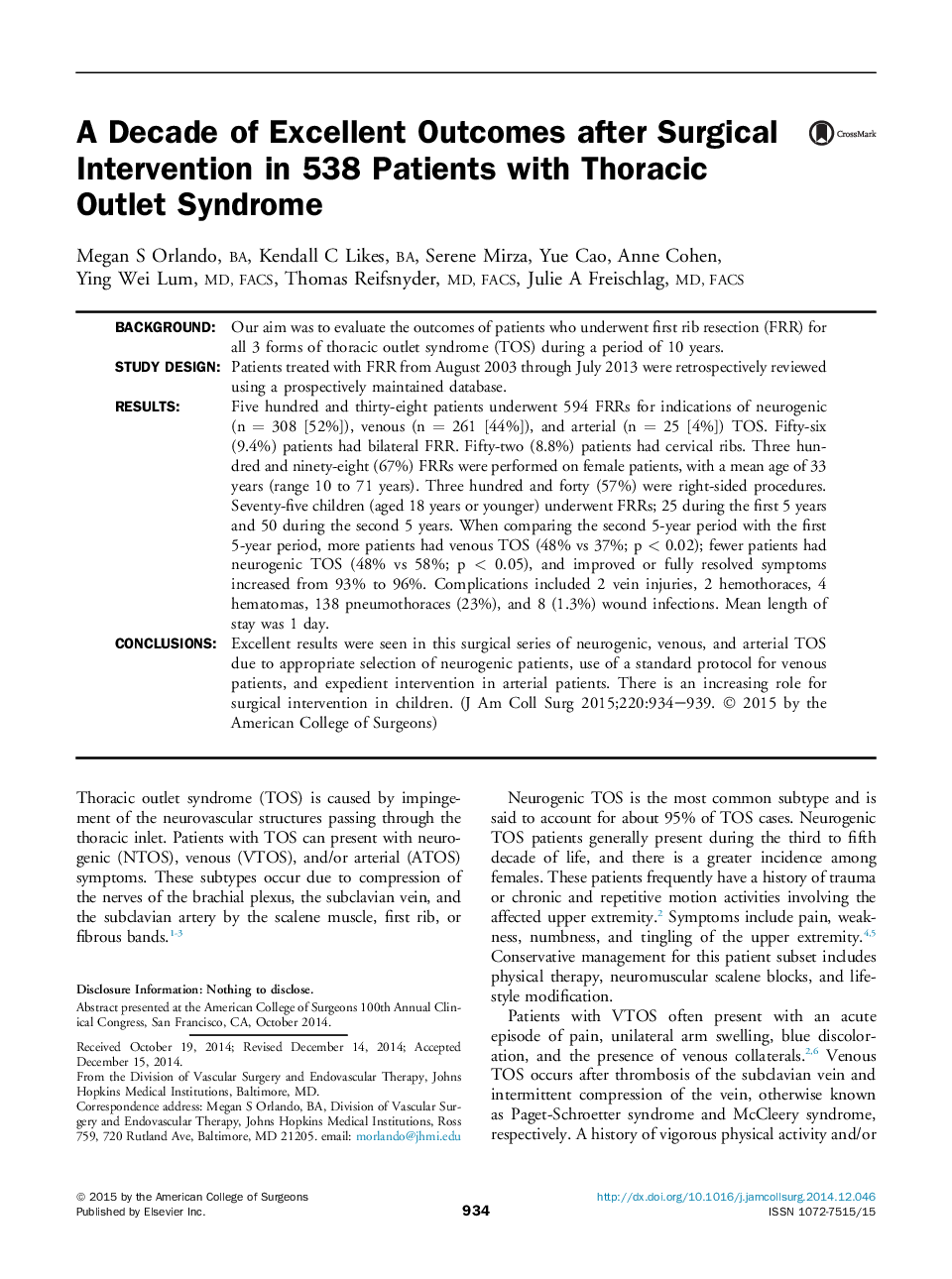| Article ID | Journal | Published Year | Pages | File Type |
|---|---|---|---|---|
| 4291272 | Journal of the American College of Surgeons | 2015 | 6 Pages |
BackgroundOur aim was to evaluate the outcomes of patients who underwent first rib resection (FRR) for all 3 forms of thoracic outlet syndrome (TOS) during a period of 10 years.Study DesignPatients treated with FRR from August 2003 through July 2013 were retrospectively reviewed using a prospectively maintained database.ResultsFive hundred and thirty-eight patients underwent 594 FRRs for indications of neurogenic (n = 308 [52%]), venous (n = 261 [44%]), and arterial (n = 25 [4%]) TOS. Fifty-six (9.4%) patients had bilateral FRR. Fifty-two (8.8%) patients had cervical ribs. Three hundred and ninety-eight (67%) FRRs were performed on female patients, with a mean age of 33 years (range 10 to 71 years). Three hundred and forty (57%) were right-sided procedures. Seventy-five children (aged 18 years or younger) underwent FRRs; 25 during the first 5 years and 50 during the second 5 years. When comparing the second 5-year period with the first 5-year period, more patients had venous TOS (48% vs 37%; p < 0.02); fewer patients had neurogenic TOS (48% vs 58%; p < 0.05), and improved or fully resolved symptoms increased from 93% to 96%. Complications included 2 vein injuries, 2 hemothoraces, 4 hematomas, 138 pneumothoraces (23%), and 8 (1.3%) wound infections. Mean length of stay was 1 day.ConclusionsExcellent results were seen in this surgical series of neurogenic, venous, and arterial TOS due to appropriate selection of neurogenic patients, use of a standard protocol for venous patients, and expedient intervention in arterial patients. There is an increasing role for surgical intervention in children.
